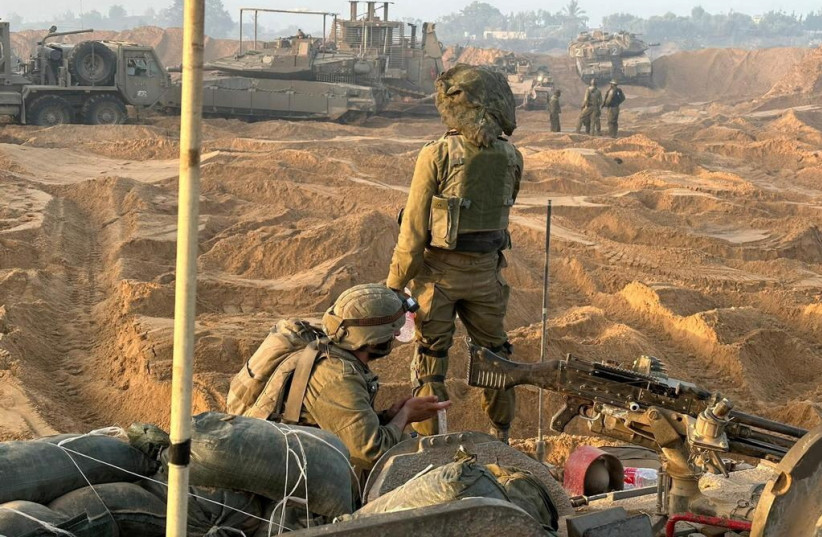Foreign
IDF strikes over 450 Hamas targets on Sunday as ground war rages on

1,400 Israelis murdered since October 7, including 347 soldiers • 240 held hostage by Hamas, four hostages released, one rescued

IDF: We are ready for winter war in Gaza Stability in Gaza off in the distance •
Bullet proof vests for IDF troops in Gazan cities, not on border •

The IDF believes it is ready to continue fighting through the winter and has already started an extensive process to outfit its troops on all borders with special winter gear.
A statement on Monday said that the IDF has already handed out 129,000 winter jackets and 369,000 small disposable warmer bags.
However, other than the 1948-9 Independence War, which tactically was a different era and in which the IDF was trying to hold or regain ground, not invade a hostile territory as with the current invasion of Gaza, the IDF has no experience with winter season battle.
History is full of examples of winter slowing, pausing, or harming the progress of an invasion, from Russia’s current invasion of Ukraine to Germany’s World War II invasion of Russia.
Assuming the IDF really has or is providing all necessary additional jackets, heating platforms, and addressing other issues related to staying warm and how humans and machines operate differently in winter, it could avoid some major pitfalls.
But even if the IDF addresses these known and basic issues – such as making sure soldiers do not freeze in the field – it is unclear how prepared the IDF will be strategically and tactically given the lack of operating in the winter under the pressure of battle.
The IDF also views the issue as a serious one to wrestle with.
This challenge is multiplied when taking into account that there is no real end date set for the invasion.
At times, top IDF and political officials framed the intense part of the conflict in terms of one to two months, which would have meant a reduction of hostilities around December 7.
Yet, the invasion did not start until October 25-27, which could easily push heavy fighting to late December, and more recent statements have suggested the period of intense battles could go on for months more.
Defense sources have said that while IDF troops in the field are getting all of the logistics resupply they need in terms of ammunition, force protection, fuel, equipment, and food, building even makeshift mini-forward bases to provide such logistics resupply within Gaza is still not even close to within sight.
If progress in stabilizing even parts of northern Gaza where the IDF currently has more control is still not in sight, then either the period of intense fighting could go deeper into the winter months, or some part of the winter could serve as a first cut-off or slow down point for the IDF invasion.
Logistics ‘mostly successful’ so far
Top IDF officials described their logistics division as mostly successful so far in keeping IDF forces within Gaza supplied, despite the augmented challenges of moving fuel trucks through enemy territory where they can be struck by anti-tank missiles and mortars.
Regarding providing bulletproof vests, 5,000 additional vests have been provided to IDF troops since the invasion, on top of those provided in the first three weeks of the war.
Top IDF officials acknowledge that many IDF forces standing guard on the border with Gaza, and who are not entering actual urban areas, do not have bulletproof vests.
Rather, they have vests made to withstand shrapnel explosions.
IDF sources explained that these troops are unlikely at this stage to encounter close fighting with Hamas forces, but may encounter explosions from mortars or rockets.
They added that the vests given to these border guard troops provide wider protection from shrapnel, even as they do not protect from bullets.
IDF Southern Command Logistics Officer Col. Oren Fortal said, “ from the moment of our forces’ invasion, the logistics division has acted broadly to rescue vehicles from the war zone, to evacuate wounded persons, and to save lives. In addition, the apparatus provides to our forces nightly resupplies of fuel, ammunition, tools for invading, food, for energy stimulation, and vast medical supplies.”
Some other logistics statistics during the invasion to date include providing soldiers with 2,127,000 bottles of water, 4,240,000 food hand-outs, and 78,000 mattresses.

























